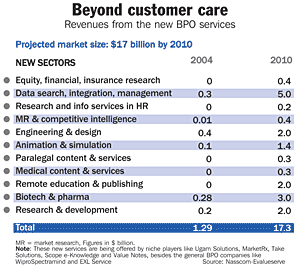HRO for the Mid-Market
Size doesn’t matter... in HRO. The time has come for mid-market companies to consider HRO.
By Mark Hodges
Corporations categorized as “middle market”or “mid-sized companies” frequentlyask me if HRO is appropriate for a company of their size. My answeris a definitive “Yes.” I define the middle market as companies with annual revenues ofbetween $500 million to $5 billion, and 1,000 to 10,000 active employees in a given fiscal year. If yourcompany meets these standards, here’s how to evaluate if HRO is the right choice for your company.
What is your annual HR cost per employee?
Many mid-sized companies have startlingly high costs—often exceeding $4,000 per active employee. Sincethe market average is approximately $1,500 per activeemployee per year, costs that are markedly higherthan $1,500 present substantial potential margin toan HR outsourcer. Good margins attract goodHR outsourcers.
Is your HRIT technology sunsetting?
Are you on an HRIT platform that is going to require a major upgrade(representing a significant capital investment) orare you facing a maintenance contract expiration?A company with 5,000 active employees couldspend between $4 million to $8 million over a 12- to18-month period for new HRIT technology andimplementation. An HR outsourcer can offset many ofthese expenses for you.
Are you willing to put enough HR processesin scope for the HR outsourcer?
Or will your outsourcingapproach be a selective and a la carte—aprocess-by-process strategy? If you are willing to selecta single HRO provider and allow them to take on a significantportion of scope (more than 10 HR processes),it is likely they can drive significant cost savingsand hence make you an attractive client.
Are you willing to adopt the service providers’service delivery model?
If you are willing to focuson the “what” you are buying, and not the “how” orthe “where,” you will make an appealing prospectiveclient to an HR outsourcer. HR outsourcers haverobust service delivery models for middle marketcompanies—why make them recreate the models foryou? If you do, the economics will not work for theoutsourcer... or for you.
Do you expect the HR outsourcer to absorb anytransitioned HR employees?
Or are you willing to giveseverance packages and take care of this important issueyourself? The cost of severance is high—and
most HR outsourcers are willing to take on this liability—but itis not free. More precisely, it is a “loan” for whichthere will be a charge. In some rare instances, the HRoutsourcer is actually in need of HR personnel and iswilling to hire your impacted staff with very attractiveemployment packages.
What are you willing to pay?
Is paying $700to $1,000 per active employee for HR services withbetter service levels acceptable to you? Or are youexpecting deeper pricing discounts? Most comprehensiveHRO relationships have price points ofbetween $750 to $1,000 per active employee on anannual run rate basis (i.e., after one-time transition/conversion costs). Keep in mind, you will still possessthe retained HR organization, and it has aninherent cost as well. You will need to assess therequired skill sets and costs of the retained HR organizationand add to that the charges for theHR outsourcer in order to get a true picture of yourcosts going forward in the outsourced HR model. Evenwith this calculus, many mid-sized companies findthis economic picture much more attractive thantheir status quo trajectory and frequently they findit to be more attractive than an internal HR transformationinitiative.
Will you be outsourcing HR by itself or will yoube bundling it with finance and accounting, IT, orother business functions?
It is easier to attract theattention of a greater number of outsourcers by increasingthe scope of the contemplated transaction byadding additional business functions. If your goal is toattract very large, name-brand outsourcers, a multifunctionarrangement is more attractive for theirinvestment model.
In addition to the larger HR outsourcers such asExult, Accenture, ACS, IBM, EDS, Convergys,Hewitt, Mellon, Aon, and others who typically (butnot always) target customers with more than 10,000active employees per year, a community of HR outsourcersthat target the middle market does exist.Examples include Employease, Trinet, DDC HRO,USi, Black Mountain Group, Adminstaff, Ceridian,and ADP, among others.Don’t let the perceived size of your “mid-sized”corporation stop you from assessing the potential valueof HRO. The myriad of criteria that are considered byHR outsourcers strongly influence their evaluation ofa prospective middle market client.
[ Mark Hodges is Chairman and Cofounder of EquaTerra ]
.


